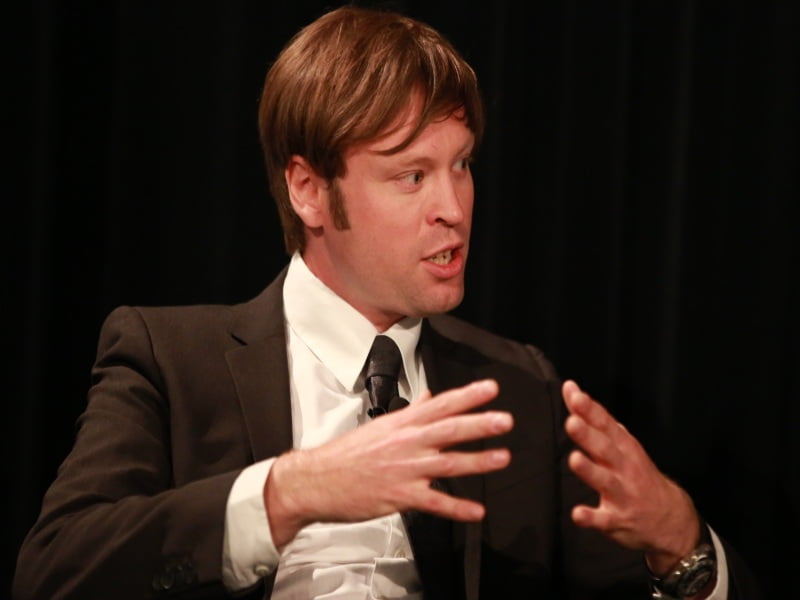The change agents within the UK’s Government Digital Service have so far reduced the British Government’s £16 billion annual technology spend by £1 billion since the agency was established in 2011.
“We haven’t done that by being cheap, we’ve done it by being better,” said the UK Cabinet Office’s Public Service Network chief technology officer James Duncan. The transformation, and the savings, has been achieved by a drive to simplify government products and services.
And a key to this program has been in simplifying vendor contracts and service delivery. The challenge has been primarily in breaking up the entrenched interests of both the departmental power structures and the self-interest of the large vendors that serviced them.

This has not been easy. It’s not that the GDS had to go to war, but they have certainly been in a fight.
Speaking at the Technology in Government conference in Canberra, Mr Duncan said it was incredibly important to have the cover provided by former Cabinet Secretary Francis Maude pushing the case in relation to vendor contract renegotiations.
It gave the DTO offices the authority of a senior Cabinet Minister as cover each time they pressed for change – both with civil service chiefs and with powerful vendor interests.
“It was incredibly important to have Francis Maude there. It gave us top cover, and we were able to do things because we could just point to the fact that we were just doing government policy,” he said.
“We’re certainly not anti-business [at the GDS], we are just pro-competition.”
Mr Duncan said the dictum of “fail fast and fail early” was a difficult to sell in the public sector, but it was incredibly important to digital programs. The fear of failure, he said, was a tremendous roadblock to change.
“It is important to understand that by the time things fail in government [in the past], its lost a billion dollars,” he said. “So saying that we will fail early and fail at a fraction of the cost is not a big sell.”
“In 1993, William Gibson said the future is already here. It’s just not evenly distributed,” he said. “This is certainly true of the public sector.”
Mr Duncan said the size of the British civil service meant that its executives often grew their careers within its confines – and did not get a chance to look at the way the private sector was tackling similar issues.
In the US, President Barack Obama’s hand-picked CTO Aneesh Chopra similarly says there are definitely learnings that the governments can take – and should take – from smart companies in the private sector.
In fact, Mr Chopra says he took his three biggest learnings from corporates. Procter & Gamble, Amazon and Facebook.
He says P&G was instructive about getting the culture right, in defining the philosophy and leadership of the organisation. The company had shifted a strict policy of building product and innovation in-house, to welcoming ideas and innovations from external sources.
From Amazon he took Jeff Bezos’ powerful management structure that rewarded internal innovation and entrepreneurship, empowering the frontline staff to be more specifically engaged in product delivery issues.
And for Facebook he took the “force multiplier” capability of opening up the Facebook developer platform – enabling third-party’s access to a platform to build and deliver applications via Facebook.
Mr Chopra points to the roll-out of the so-called Obamacare website as demonstrative not to do things in government.
“The notion that we were going to go live on one day, to hundreds of millions of Americans to provide this full-scale experience, was sort of in hindsight, absolutely destined to fail,” he said.
“What we do in the entrepreneurial community is that we test, validate and then we scale. What we tried to do was to establish these ‘lean startups’ staffed by internal employees combined with externals – maybe vendors or maybe individuals – and we empowered them to build pieces and parts in a more agile and modular fashion,” he said.
“Only if those actually worked and were successful were we able to see them appear [as new service models.]”
This model allowed the greater participation by smaller providers – sometimes tiny providers – in building sometimes whole of government information platforms.
One area the US Government remains extremely cautious in, is in digital voting – enabling the casting of ballots through an electronic process.
In a question from the audience, a NSW public servant said the NSW Electoral Commission had received 283,000 electronic votes and great feedback from the citizens who used it – so why was the US so opposed to the use of this technology?
“On this particular case, I am a little bit more on the side of caution,” Mr Chopra said. “One of my colleagues, who is now the deputy CTO in the US was a professor at Princeton, Ed Felton, demonstrated the ability to hack the electronic voting systems that were on the market today.
“So we had a bit of a concern about the validity of that technology. And since so much of the voting experience was still laden with paper, our immediate priority was basically digitising up until the vote, and after the vote.”
Do you know more? Contact James Riley via Email.

